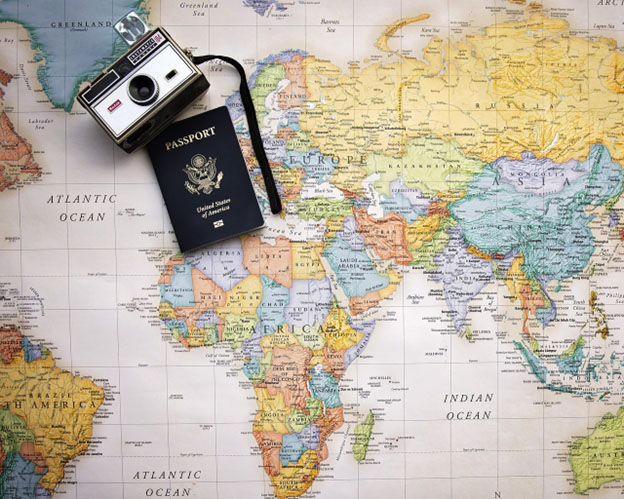How to Compare Travel Insurance Plans: Key Factors to Consider

Travel insurance is a crucial aspect of trip planning that ensures you are financially protected against unexpected events while traveling. Whether you're embarking on a leisurely vacation or a business trip, understanding how to compare different travel insurance plans can save you from potential hassles and financial losses. Here’s a comprehensive guide to help you navigate through the key factors when comparing travel insurance plans.
1. Coverage Options
The first step in comparing travel insurance plans is to evaluate their coverage options. Coverage typically includes:
- Trip Cancellation and Interruption: Reimburses prepaid, non-refundable trip costs if you have to cancel or cut short your trip due to covered reasons such as illness, injury, or other unforeseen events.
- Medical Emergencies: Covers medical expenses incurred due to illness or injury during your trip. This includes hospital stays, doctor visits, and emergency medical evacuation.
- Baggage and Personal Belongings: Provides reimbursement for lost, stolen, or damaged baggage and personal items.
- Travel Delay: Covers additional expenses incurred due to unexpected travel delays, such as accommodation and meals.
Compare the limits and exclusions of each coverage type across different plans to ensure they meet your specific needs.
2. Cost of the Plan
While cost shouldn’t be the only factor, it’s important to consider how much each plan costs relative to the coverage it offers. Premiums can vary based on factors like your age, trip duration, and destination. Look for a balance between affordability and comprehensive coverage to get the best value for your money.
3. Exclusions and Limitations
Carefully review the exclusions and limitations of each travel insurance plan. Common exclusions may include pre-existing medical conditions, adventurous activities like extreme sports, and acts of terrorism in certain regions. Understanding these exclusions helps you choose a plan that aligns with your travel itinerary and activities.
4. Policy Limits and Deductibles
Policy limits refer to the maximum amount the insurance company will pay for each type of coverage. Deductibles are the amount you must pay out of pocket before your insurance coverage kicks in. Lower deductibles generally mean higher premiums, so assess your comfort level with deductibles when comparing plans.
5. Claim Process and Customer Support
A smooth claim process and reliable customer support are crucial when you’re in a foreign country dealing with an emergency. Read reviews or ask for recommendations to gauge the quality of customer service provided by different insurance companies. Look for insurers with 24/7 assistance hotlines and straightforward claims procedures.
6. Additional Benefits and Features
Some travel insurance plans offer additional benefits such as:
- Coverage for Adventure Activities: If you plan to engage in sports like skiing or scuba diving, ensure your insurance covers these activities.
- Coverage for Electronics: Reimbursement for lost or stolen electronic devices like smartphones and laptops.
- Coverage Extensions: Options to extend coverage if your trip lasts longer than originally planned.
Evaluate these additional benefits to see if they enhance the value of the plan for your specific travel needs.
7. Reputation and Financial Stability of the Insurer
Choose a reputable insurance company with a strong financial standing. Check ratings from independent agencies like A.M. Best or Standard & Poor’s to assess the insurer’s financial stability and ability to pay claims promptly.
8. Review Policy Wording
Before making a final decision, carefully read the policy wording of each travel insurance plan. Pay attention to the fine print, terms, and conditions to fully understand what is covered and any specific requirements or obligations you must fulfill.
9. Compare Multiple Quotes
Obtain quotes from multiple insurers to compare premiums and coverage. Online comparison tools and travel insurance aggregators can simplify this process by providing side-by-side comparisons of different plans. Using the Singsaver.com.sg travel insurance comparison tool can further assist you in efficiently evaluating various options, helping you pinpoint the plan that best matches your needs.
10. Consult with a Travel Insurance Expert
If you’re uncertain about which travel insurance plan to choose, consider consulting with a travel insurance expert or an insurance broker. They can provide personalized recommendations based on your travel itinerary and specific requirements.
Conclusion
Comparing travel insurance plans involves a careful assessment of coverage options, costs, exclusions, customer support, and additional benefits. By understanding these key factors and thoroughly evaluating different plans, you can select a travel insurance policy that provides peace of mind and comprehensive protection for your travels. Remember, the right travel insurance plan can make a significant difference in ensuring a worry-free and enjoyable trip.
|